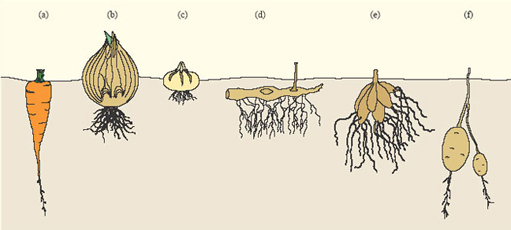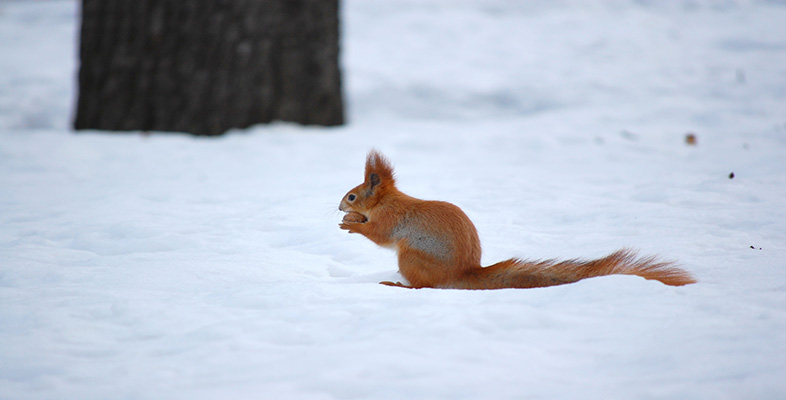1.4.2 Winter storage in plants
Many plants that survive winter in a dormant state form storage organs below the ground which store nutrients during the winter, the rest of the plant withering away. Storage organs come in a variety of forms, including tap roots, bulbs, corms, rhizomes, root tubers and stem tubers (Figure 13). In the carrot, the root is greatly enlarged into a fleshy tap root; the bulbs of onions are modified leaves; crocus corms, iris rhizomes and dahlia tubers are modified stems, and the tubers of potatoes are modified tips of underground stems.

Unlike animals, few plants store energy reserves as fats (lipids). Those that do, generally store fats in seeds or fruits, a good example of the latter being the avocado (Persea americana). Storage in root organs is generally in the form of starch. Because they bind water, carbohydrates prevent desiccation of the storage organ and also reduce its freezing point, acting as 'antifreeze'. Plant storage organs provide ready-made larders for those herbivores that remain active in winter.
The root of a carrot serves as a storage organ, enabling the plant to complete its two-year life cycle. The storage organs of many plants are, however, also a means of asexual or vegetative reproduction. For example, the rhizomes of irises grow and branch and, as older parts of a rhizome die, two or more new plants are formed from the parts that are left. The tubers of a potato plant can each grow into a new plant and the bulbs of such plants as onions and daffodils (Narcissus sp.) divide to produce new bulbs and thus new plants.
